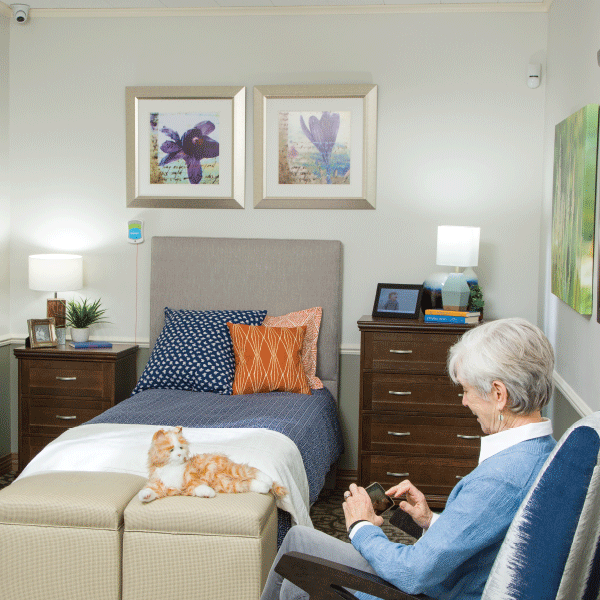Unsupported Browser! This website offers limited functionality in this browser. For the best website experience, please download the most recent version of Chrome, Firefox, Safari, and Edge.
Improve outcomes with innovative tech solutions

Increased Revenue
From the latest safety systems to high-impact digital signage, installing marketable technology can help you attract prospective residents and their families as well as support increased occupancy and monthly rates.
Drive Out Costs
With smartphone apps and connected equipment, updated tech can help you maximize staff productivity, maintain care during staffing shortages and adjust to the changing reimbursement landscape.
Improve Resident Outcomes
Innovative technology can not only offer staff more dedicated time with residents, it can also help you boost safety, adapt to rising acuity and provide better care to residents.
How we can help
Making the right foundational technology decisions, including installing the latest building infrastructure and systems, can help you improve operations and provide the best resident care - now and in the future.
When it’s time to install, replace, or upgrade your technology, we provide the systems you need to keep residents and staff safe.
Technology Systems & PartsRely on the Direct Supply Difference
Senior Living Experts
Trust our team of 20+ partners, including project managers, engineers, technology designers and more, to help you through the technology process.
Innovation & Technology Center
With a focus on AI, machine vision and IoT, we’ll help you navigate the future of Senior Living technology.
Nationwide Reach, Local Flair
Rely on our experience completing projects nationwide as well as our strong local ties across the U.S.
Comprehensive Support
From planning and procurement to installation and ongoing support, depend on our outrageous customer service every step of the way.
Contact us
Reach out to learn about our solutions and capabilities, or request a demo.
Phone